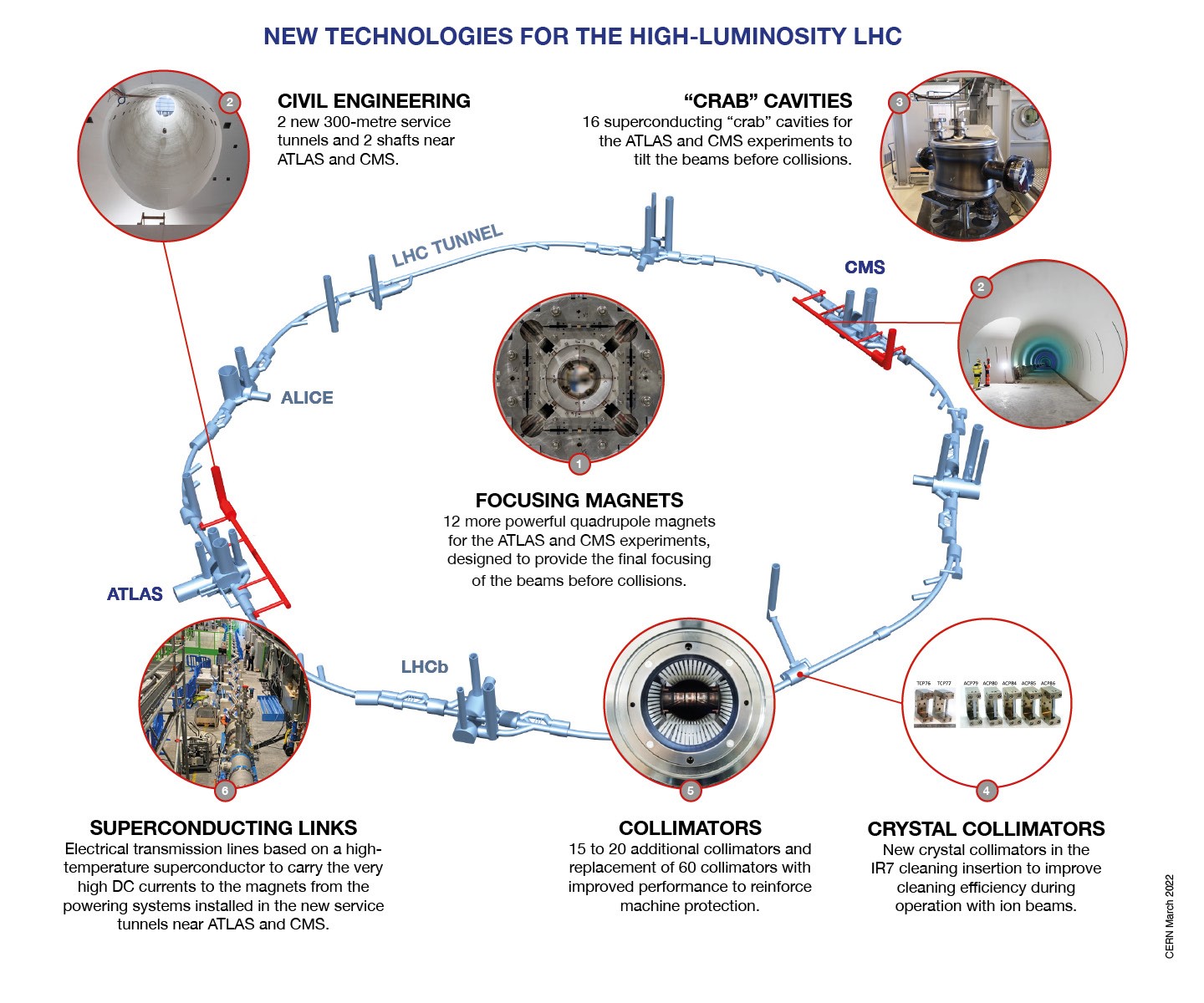In the realm of high-energy physics, the Large Hadron Collider (LHC) at CERN stands as a monumental beacon of scientific inquiry. It is not merely a particle accelerator; it is a crucible where the fundamental constituents of matter are scrutinized at velocities approaching the speed of light. To understand the actual speed of particles in the LHC, one must traverse the intricate tapestry of relativistic physics, delve into the principles of acceleration and momentum, and embrace the paradoxes that characterize the physical universe.
At its core, the LHC employs two counter-rotating beams of protons, each traveling at astonishing speeds. These protons, akin to cosmic marbles, traverse a 27-kilometer circular tunnel beneath the French-Swiss border. But to grasp the essence of their speed, we must first consider Einstein’s theory of relativity. As particles accelerate towards the speed of light—approximately (299,792,458) meters per second—their mass effectively increases. This relativistic effect complicates the straightforward notion of speed. The closer protons approach their luminal limit, the more energy is required to continue accelerating them.
This extraordinary feat is achieved through a series of powerful superconducting magnets and radiofrequency cavities that continuously impart energy to the particles. Initially, protons are stripped from hydrogen atoms. These protons are then pre-accelerated through linear accelerators and smaller synchrotrons before they enter the LHC’s grand loop. As they spiral along the accelerator’s path, particles appreciate the aesthetic of acceleration, gaining momentum akin to dancers twirling faster in a grand performance.
The maximum speed of the protons in the LHC reaches approximately (99.9999991%) of the speed of light. This remarkable velocity evokes a sense of wonder; at such speeds, time and space behave differently. Time dilation phenomena emerge, wherein a proton’s experience of time is vastly different from that of an observer outside the accelerator. The result is a juxtaposition of temporal dimensions, where high-velocity particles appear to defy the conventional flow of time.
However, to fully appreciate the significance of this speed, one must consider it not merely in isolation but in the context of the LHC’s experimental endeavors. The collider’s purpose is twofold: to elucidate fundamental particles and explore the interactions that govern the cosmos. When protons collide at near-luminal speeds, they manifest energies on the order of trillions of electronvolts. Such energies allow scientists to probe previously inaccessible regimes of nature, potentially unlocking secrets that date back to the infancy of the Universe.
In this arena of particle collisions, the terminologies of ‘energy’ and ‘speed’ transcend their traditional meanings. The velocities attained during particle collisions are comprehended in terms of kinetic energy—the energy of motion. In the environment of the LHC, kinetic energy fuels the environment where theorists seek to discover super-symmetric particles, the enigmatic Higgs boson, or even hints of dark matter. The cascade of events leading to particle conditions can be likened to a grand symphony, where each collision resonates in the fabric of spacetime, reverberating with every energetic interaction.
The repercussions of these extraordinary collisions extend beyond the realms of theoretical physics. They generate vast amounts of data, akin to a torrent, that must be meticulously sifted and analyzed. Trackers and detectors operate in concert, capturing fleeting remnants of high-energy events that are over in a fraction of a second. The intricacy of this data elucidates the behavior of subatomic particles, yielding insights into the structure of matter and the fundamental forces that bind it.
For all the mathematical elegance and experimental rigor, the wonder of the LHC is more than just the numbers that describe particle speeds. It’s about the relentless pursuit of knowledge and the human spirit’s yearning to understand the universe’s deep mysteries. Every proton that zooms through the collider embodies centuries of scientific endeavor—each carrying the aspirations of physicists, each collision representing a step closer to unraveling the tapestry of existence.
The implications of achieving such speeds extend into the theoretical possibilities of future technologies. The research conducted at the LHC pushes the boundaries of current understanding, paving paths for advancements that may one day transform our modern world in unexpected ways. Whether through practical applications in computing, materials science, or medical imaging, the legacy of the LHC and the particles it propels at relativistic speeds may catalyze innovations yet unrealized.
In this magnificent interplay of nature’s fundamental laws and human ingenuity, the actual speed of particles in the LHC encapsulates much more than mere numbers. It displays a microcosm of the universe, reflecting the continuum of discovery where theoretical ambitions harmonize with empirical verification. As humanity continues to probe the depths of the cosmos, the particles of the LHC, racing toward the precipice of light, remind us of our limitless quest for understanding and the beauty inherent in the science of the smallest things.












